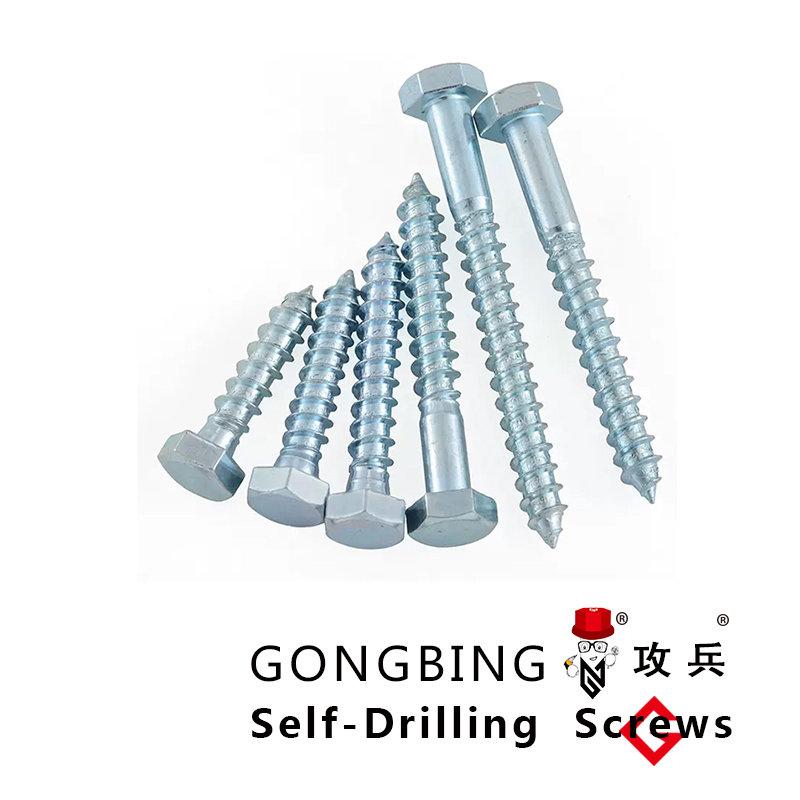Stainless Steel Self-Drilling Screws with Wafer Heads for Versatile Applications
Understanding Stainless Steel Wafer Head Self-Drilling Screws
In the realm of construction and manufacturing, the choice of fasteners is critical to the integrity and durability of assembly. Amongst the variety of fasteners available, stainless steel wafer head self-drilling screws have emerged as a popular choice due to their unique combination of features that enhance performance and longevity. This article delves into the characteristics, applications, and advantages of stainless steel wafer head self-drilling screws.
What Are Stainless Steel Wafer Head Self-Drilling Screws?
Stainless steel wafer head self-drilling screws are a type of fastener characterized by their flat, wide heads and the ability to drill their own holes when driven into materials. The wafer head design allows for greater surface area, providing an increased clamping force and resistance to pull-through. Unlike traditional screws that require a pre-drilled hole, self-drilling screws possess a sharp tip that enables them to cut through various materials, making them both efficient and time-saving.
Material Composition
These screws are made from stainless steel, which is known for its excellent corrosion resistance, strength, and durability. Stainless steel is an ideal choice for outdoor applications or in environments where moisture or harsh chemicals are present. The most common grades used for these screws are 304 and 316 stainless steel, where 316 offers superior corrosion resistance, especially in saline environments, making it ideal for marine applications.
Applications
stainless steel wafer head self drilling screws

Stainless steel wafer head self-drilling screws are versatile and find applications across various industries. They are commonly used in
1. Construction Ideal for fastening metal to metal or metal to wood, these screws are often used in steel framing and roofing applications. 2. HVAC They are instrumental in securing ductwork and components, ensuring the longevity and efficiency of heating and cooling systems. 3. Automotive Used in vehicle assembly, these screws provide reliable fastening options in various automotive parts. 4. Marine Applications The corrosion resistance of stainless steel makes these screws suitable for boats, docks, and other marine infrastructures.
Advantages
1. Time Efficiency The self-drilling feature eliminates the need for pre-drilling, significantly reducing installation time and labor costs. 2. Strong Joinery The wafer head design provides a high clamping force, ensuring tight joins that can withstand significant loads and stresses. 3. Corrosion Resistance Stainless steel’s resistance to rust and corrosion extends the lifespan of structures and components, especially in exposed environments. 4. Versatile Use These screws can be used with a variety of materials, including wood, plastic, and metal, making them a versatile choice for various applications. 5. Reduced Maintenance The longevity and durability of stainless steel fasteners result in lower maintenance costs over time.
Conclusion
Stainless steel wafer head self-drilling screws are an indispensable component in modern construction and manufacturing. Their combination of efficiency, strength, and resistance to environmental factors makes them a preferred choice across various industries. As technology continues to advance, the development of improved stainless steel alloys and screw designs will likely enhance the already impressive performance of these fasteners. Ultimately, when choosing fasteners, understanding the specific application and the material’s properties is crucial to achieving the best results, and stainless steel wafer head self-drilling screws stand out as a reliable option in this regard.
-
Weatherproof Plastic Expansion Anchors for OutdoorNewsJun.06,2025
-
Sustainability in the Supply Chain: Eco-Friendly TEK Screws ProductionNewsJun.06,2025
-
Load-Bearing Capacity of External Insulation FixingsNewsJun.06,2025
-
Double Head Bolts: Enhancing Efficiency in Industrial MachineryNewsJun.06,2025
-
Corrosion Resistance in Chipboard Screws: Coatings for Wholesale DurabilityNewsJun.06,2025
-
Butterfly Toggle Bolts : Enhancing Structural ResilienceNewsJun.06,2025
